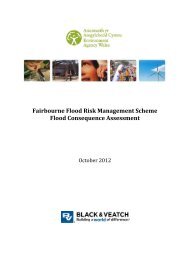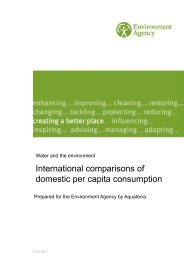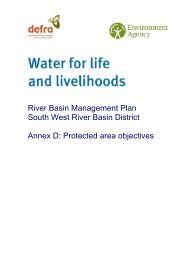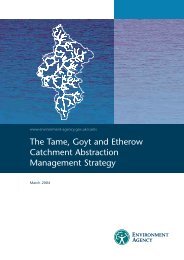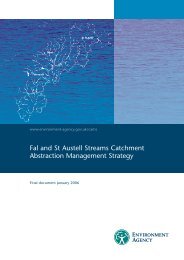Karenia mikimotoi
Karenia mikimotoi
Karenia mikimotoi
You also want an ePaper? Increase the reach of your titles
YUMPU automatically turns print PDFs into web optimized ePapers that Google loves.
Acute skin irritant<br />
effects of<br />
cyanobacteria in<br />
healthy volunteers<br />
using skin patch<br />
testing<br />
Cutaneous<br />
hypersensitivity<br />
reactions to<br />
freshwater<br />
cyanobacteria –<br />
human volunteer<br />
studies<br />
Cyanobacterial<br />
lipopolysachharides<br />
(LPS)<br />
strongest irritative effect was shown by the water<br />
soluble fraction.<br />
Cell suspensions and extracts of cyanobacterial<br />
cultures of Microcystis aeruginosa (non-toxic<br />
strain), Anabaena circinalis and Nodularia<br />
spumigena were applied to 64 volunteers in one<br />
trial, and Microcystis aeruginosa (toxic strain),<br />
Aphanocapsa incerta and Cylindrospermopsis<br />
raciborskii were applied to 50 volunteers in a<br />
second trial. The conclusion was that a small<br />
proportion of healthy people (around 20%) may<br />
develop a skin reaction to cyanobacteria in the<br />
course of normal water recreation, but the<br />
reaction is mild and will resolve without<br />
treatment.<br />
A consecutive series of adult patients presenting<br />
for diagnostic skin patch testing participated. A<br />
sample of volunteers matched for age and sex<br />
was also enrolled. Patches containing aqueous<br />
suspensions of various cyanobacteria, including<br />
Microcystis aeruginosa, at three concentrations<br />
were applied for 48 h; dermato- logical<br />
assessment was made 48 h and 96 h after<br />
application. 20 outpatients and 19 reference<br />
subjects were recruited into the study.<br />
A single outpatient produced unequivocal<br />
reactions to several cyanobacteria suspensions;<br />
this subject was also the only one of the<br />
outpatient group with a diagnosis of atopic<br />
dermatitis. No subjects in the reference group<br />
developed clinically detectable skin reactions to<br />
cyanobacteria.<br />
The conclusion from the study was that<br />
hypersensitivity reactions to cyanobacteria<br />
appear to be infrequent in both the general and<br />
dermatological outpatient populations. As<br />
cyanobacteria are widely distributed in aquatic<br />
environments, a better appreciation of risk<br />
factors, particularly with respect to allergic<br />
predisposition, might help to refine health advice<br />
given to people engaging in recreational<br />
activities where nuisance cyanobacteria are a<br />
problem.<br />
Review of evidence. LPS frequently cited in the<br />
cyanobacteria literature as toxins responsible for<br />
a variety of heath effects in humans (skin rashes<br />
to gastrointestinal, respiratory and allergic<br />
reactions). Most of the small number of formal<br />
research reports describe cyanobacterial LPS as<br />
weakly toxic compared to LPS from the<br />
Enterobacteriaceae. The literature on<br />
cyanobacterial LPS was systematically reviewed<br />
and also examined was the literature relating to<br />
heterotrophic bacterial LPS and the atypical lipid<br />
A structures of some photosynthetic bacteria. A<br />
convincing body of evidence could not be found<br />
to suggest that heterotrophic bacterial LPS, in<br />
the absence of other virulence factors, is<br />
42 A Literature review of the potential health effects of marine microalgae and macroalgae<br />
Pilotto et al.<br />
(2004)<br />
Stewart et al.<br />
(2006a)<br />
Stewart et al.<br />
(2006d)




